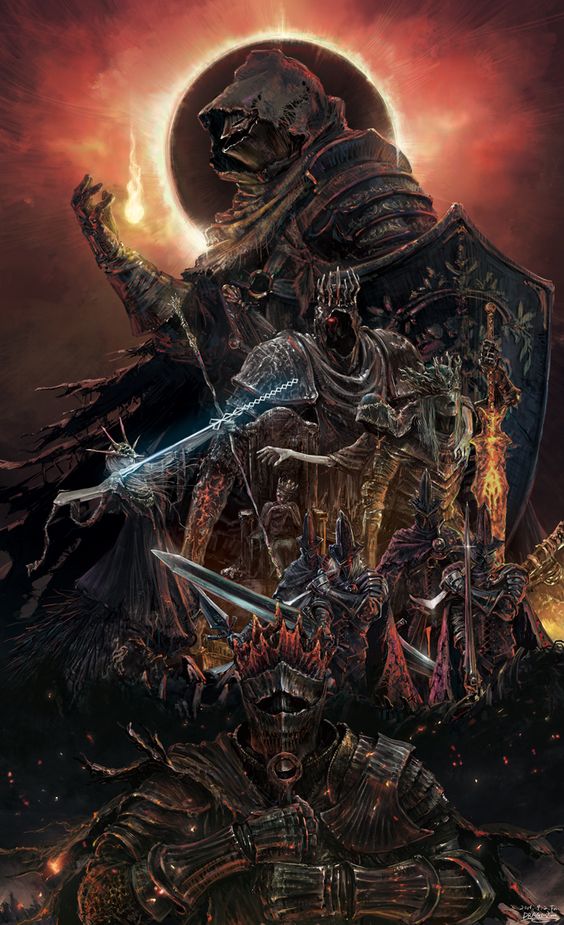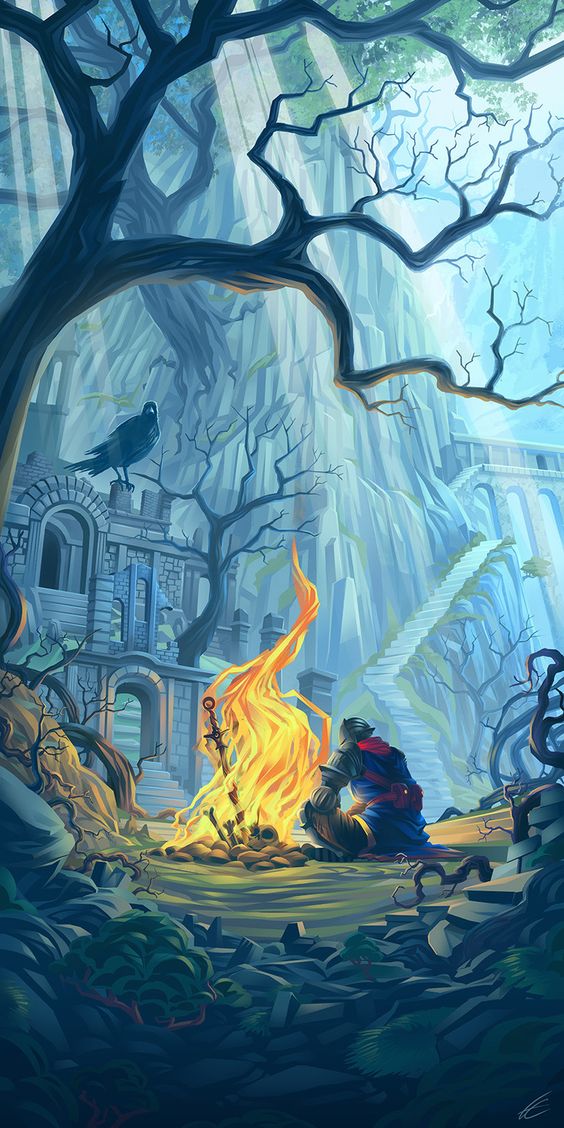"Monsters in games - how to make a player hate you"

Hello dear reader , in the previous article we discussed the distance at which monsters attack, what variations and combinations within categories
and which opponents are the most annoying for most players.
But before moving on to the fifth article of the cycle, I recommend reading the previous materials through the links:
Part 1 "Monsters in games or how to create fear"
Part 2 "Monsters in games or make fear diverse"
Part 3 "Monsters in games or how to surprise a player"
Part 4 "Monsters in games or 15 cm is enough to attack"
')
Today we will learn how to properly combine monsters for dense and interesting gameplay, we will give specific examples and visualize them.
We will talk about how to arrange them in the materials on level design in a separate series of articles.
Do you want to make cool games with thermonuclear gameplay? Want to give the user unforgettable emotions and bouts of salivation at the sight of your titles?
Welcome under cat
And so, as we have already dismantled in the last article, we have 3 enemy attack distances - melee, medium and far. Now our task is to competently combine them to create interesting game situations.
Typical situations
Imagine - a huge horned foe is running into your forehead, the creatures are overtaking it with smaller pieces with a bunch of teeth, the whole horde is already clicking its jaws and spraying its carcass. But this is not all, smaller creatures jump from the side and throw fireballs at you, and snipers somewhere in the rear behind them fire at you from powerful guns. This is DOOM .
The most impudent opponent with a shield climbs on the rampage and does not give you a descent, sly robbers go in the back and look for a window to attack, the spearman forces the situation and helps the shieldman. Oh yeah, the archers are shooting at you, but these are trifles. Assasins Creed Origins.

Difference
In DOOM everything is directed, arranged and assembled by designers and balanced, so the gameplay is very tight. If there are many enemies, they throw us away in batches (it is not always possible to understand this, the player is too keen on shooting) and they don’t allow them to catch their breath. But dynamic battles are diluted by walking across locations, where we feel the atmosphere. The fleshyness of the opponents, the finishing, the general dynamics and the coolness of what is happening make the heart beat more often, and this feeling of nostalgia ... mmm ...
In AS: Origins, opponents are simply placed in a heap and patrolling, the situation that I described above is typical, but it is very far from elaboration of DOOM. Yes, opponents are arranged according to well-thought-out rules, but fights are monotonous and do not bring the kind of joy that the extermination of hordes of demons brings. On the other hand, you feel your superiority over blind and stupid opponents. In DOOM it is, but when you first meet the Knight of Hell or Cyberdemona, you involuntarily say something like @ #! @% @! What a tvarina, and how to kill it at all?

To create interesting situations, you need to understand who in your game is a superior force - a player or monsters. Either the player needs to be given cattle for slaughter, or the player must maneuver, move and cheat in every possible way for survival.
Typical situations with a predominance of one type of opponents
For example, Anor Londo in Dark Souls, arrows of silver knights are flying at you, the difficulty is in passing through narrow platforms and visors, an arrow caught in a player pushes him away and you fly into the abyss.

You can also imagine a situation - a bridge over the abyss, a heavy armored enemy on the bridge, on either side of the bridge there are loopholes with archers, you need to defeat the fat man and at the same time dodge arrows. Not very easy, huh?
Why do we need a gulf here? - the task to drive you to a dead end, to limit the space for movement and to force the player to play by your rules. The player’s task is to break your rules and show who is in charge here, he will kite the monster on the bridge, trick him, as a result he will enter the loopholes, cut out the archers and return for the victim on the bridge - a typical hardcore player. Either he throws bombs / shoots archers and takes up the boss, he can also just unwind the creature on the bridge - midcore player.
The kazualschik will spend this location for a long time, or he will fill it up with corpses, or he will go looking for another way.
A huge demon, throwing fireballs, calls a horde of small demons, which rod on the player. The battle with Azmodan in D3, on vanilla of course. Azmodan controls the battlefield, petty demons divert attention to themselves.
Underwater rocks
If the level is traversed only in 1 way (Anor Londo), then it should be obvious and simple. (You can run there stupidly if you calculate timings).
Several options for passing the level give the player a choice, and an inquisitive player is given a difficult task, this is called adaptive gameplay, it is laid at the stage of forming the basic rules of the game. The main thing is a worthy reward, we will talk about the balance of complexity and rewards.

Combining
Now we are ready to combine opponents, understanding the combinations makes it possible to create an interesting gameplay. From simple to complex.
Situation 1
Before the player is a knight with a shield, he is covered by 2 crossbowmen.
Situation 2
In front of the player is a knight with a shield and 2 thieves behind.
Situation 3
In front of the player is a knight with a shield, a crossbowman and a spearman on the right.
Situation 4
Behind 2 robbers, in front of a knight with a shield, crossbowmen cover in front. You can add a spearman, and better two, and the complexity will grow even.
Situation 5
Behind 2 crossbowmen, 2 robbers, in front of the knight with shield and spearman.
Situation 6
Similar to 5 recruits, but in front of 2 crossbowmen.
Situation 7
Add a magician in the back, let him throw fireballs.
Atypical situations
- Behind 5 crossbowmen and in front a knight with a shield.
- 3 rogues ahead, magician behind
- 4 spearmen and magician
- 10 robbers and crossbowman
Okay with the combinations figured out, now you can collect from them whole presets and combine sets, following the rules.
Be sure to test and balance sets and combinations. To simplify - divide the need for complexity, I use light, medium, complex and combine them to obtain intermediate difficulties.
Gameplay density

The goal of any game is to create a feeling of flow, when a player understands what to do, where to go and his unconscious is activated, he simply plays and receives emotions. To do this, it is important to balance between “easy and difficult” by tilting the scales one way or the other, but remain within certain limits. The density of the gameplay, this is the number of such situations per unit of time, the more of them and the more diverse they are, the more interesting your game.
Components for tight gameplay:
- variety of opponents
- number of events per unit of time (event flow density)
- decision variability
- break and pause between events
- clarity of the player’s actions and the path of the movement (if I shoot at the head I kill, I have to go there)
- complexity balance / adaptive complexity
Do you know how this is all solved? 80% is a competent level design, the remaining 20% is mechanics.
Today's topic is part of the level design.

Instead of output
You are not in vain read to this place. Let's talk a little about combinatorics and how it will help us in the development process.
What is combinatorics?
Combinatorics is a branch of mathematics that studies the problems of choosing and arranging elements from a certain basic set in accordance with given rules. Formulas and principles of combinatorics are used in probability theory to calculate the probability of random events and, accordingly, to obtain the laws of the distribution of random variables.
This, in turn, makes it possible to investigate the patterns of mass random phenomena, which is very important for a correct understanding of the statistical patterns that manifest themselves in nature and technology.
→ Link to material
How to apply?
Calculation of possible combinations of opponents, based on incoming data. The simplest formula, you want more, read the article on the link and additional material.
Summarizing:
- Develop combination rules for the enemies in your game.
- Think up and test many options for combinations of opponents, the most convenient way to do it at the prototype stage.
- Develop your grading complexity sets and stick to it when assembling levels
- Learn combinatorics and its simple formulas, it will help you quickly identify the possible number of combinations.
Next, we will analyze how to create cool and memorable bosses and create behavior patterns, this will end the cycle of articles and begin the level design material.
Other articles by the author:
"The ruinous mistake of newbies in game devs"
"I am surrounded by idiots or how to work in a team"
Thank you for reading, the article will be supplemented with interesting comments.
At a minimum, the tactics of the mob’s “zerg-rush meat” missed - when there are no strong opponents, but there are a lot of dead, and the problem in the rational use of existing weapons and ammunition, Serious Sam CE, for example, some levels of Paynkiller (PC), can be complicated by something type hopping pit with zubastikami in Sam or slippery bridge in the PC.
And one more variant from PC can be combined with artificial complication of the level for the sake of receiving bonuses - in PC of tarot cards. For example, a level where to open a card you have to go only with a team, and at first opponents are simple, and then flying witches or armored demons appear that are easily killed from another weapon, if the bonus is not important.
- Neuromantix

Source: https://habr.com/ru/post/430862/
All Articles